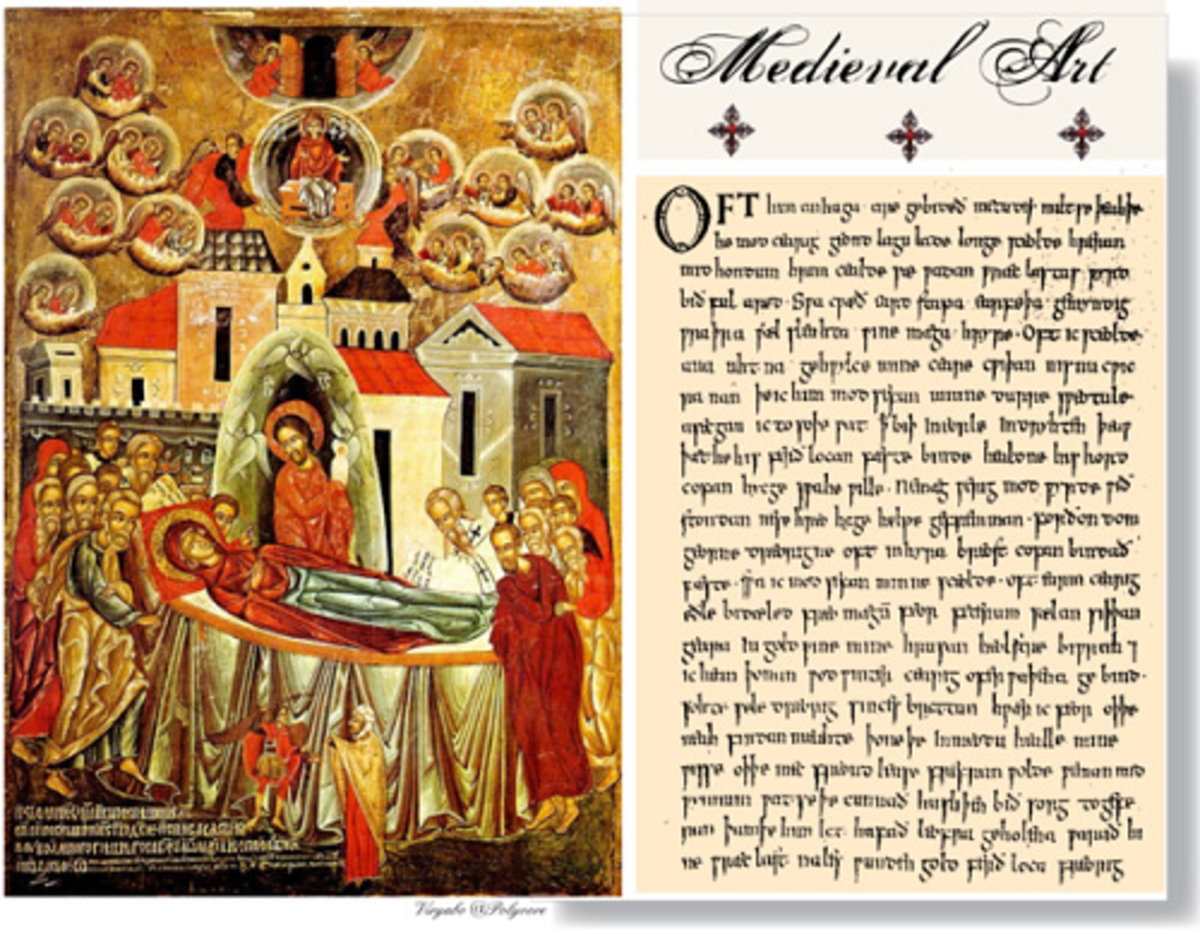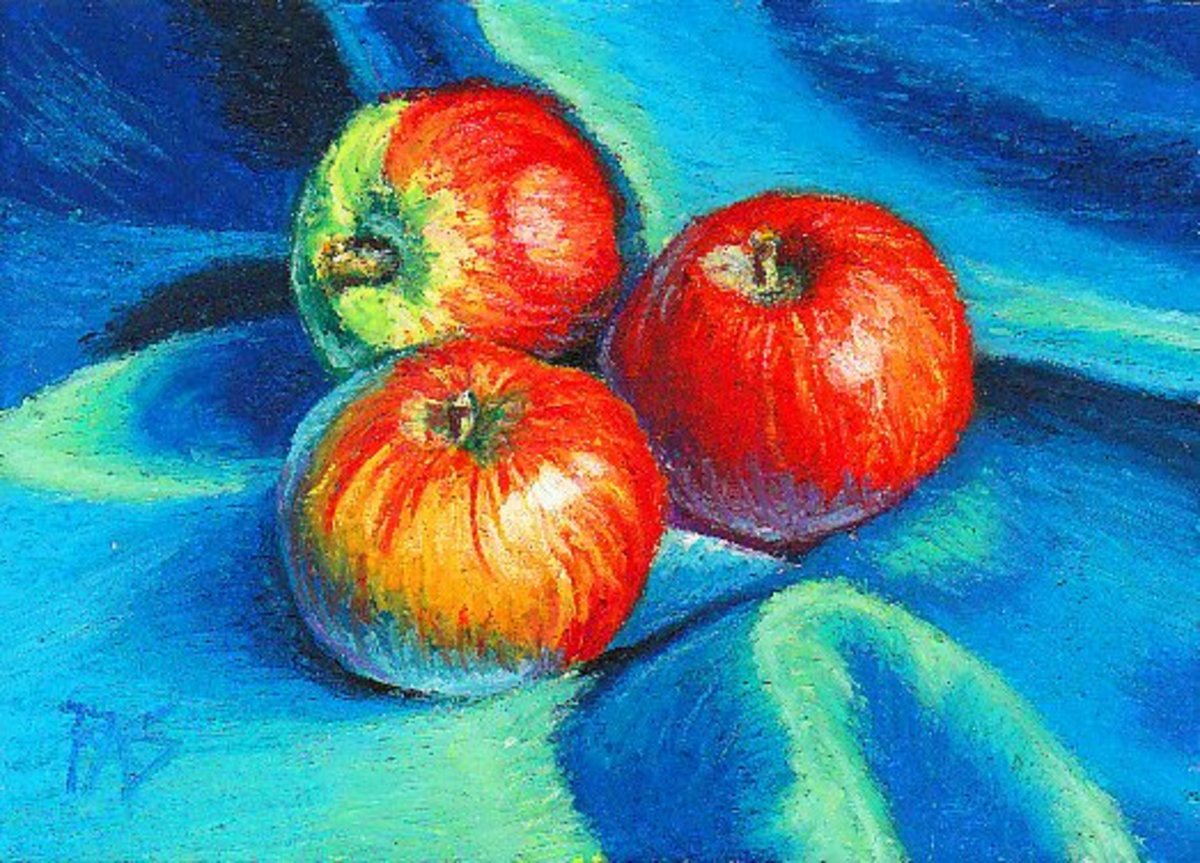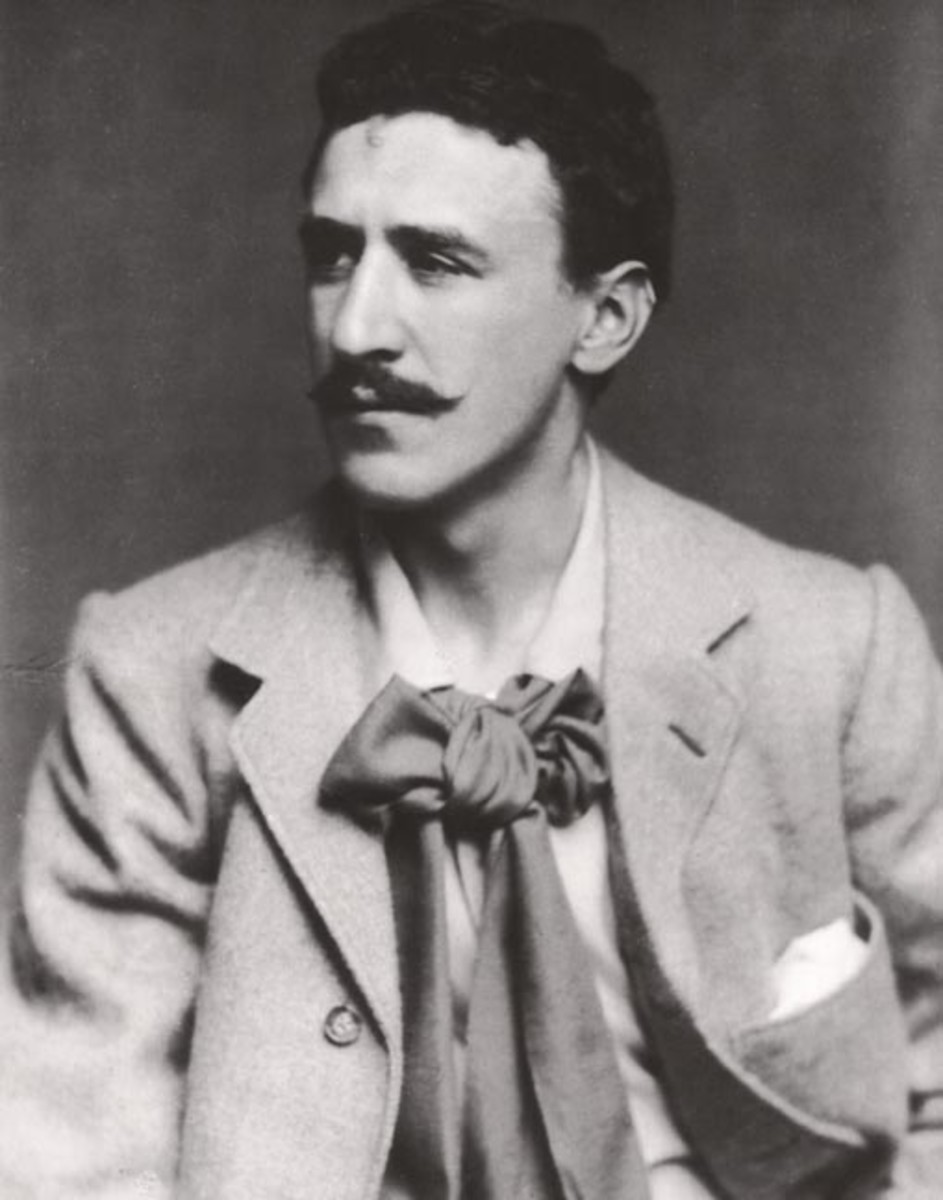Art Theory and Aesthetics
What is Art?
The question; what is art? Has long been debated by historians, scholars, critics and philosophers. While the popular definition states that it is a painting or sculpture or some other work created specifically as a piece of art, some argue that if a person, upon viewing an object or image, thinks it is art it is. Anyone may declare that an ocean, book or automobile is a work of art. This may be a casual figure of speech, more of an exclamatory phrase, attesting to its beauty, but that is not the meaning we intend in this evaluation. Art is not merely what the viewer thinks it is. There are rules and criteria and universal boundaries delineating what is art and who is an artist. If something creates an aesthetic or emotional response, is it art? Not necessarily, although art often does so.
Is the art good? Can we determine objectively if a work of art is good or not. Some measure of technical proficiency is a determinant of whether or not the work is good. Still there may be other factors; ideas not very well presented that limit a pieces artistic merit. Even so, if an artist creates it as a piece of art it is so. The subjective opinion is not a deciding factor in the question of whether or not it is art, only if we like it or see it as a good work of art.
An artist may create extraordinary versions of ordinary objects (Getlein, such as a very stylized figure or landscape, more beautiful than we seen in our everyday lives. They may also record and commemorate an historical event or occasion, thus evoking a clearer understanding than the mere statement of facts by illustrating the scene. A war may be more violently portrayed pictorially than a decription of 3,000 killed in battle. When we see the bodies on the ground after a massacre, we can truly invision the brutality of the event. As we mentioned, the attribute of seeming aesthetically pleasing, this may not infer the meaning we usually associate with beautiful, but it is still a work of art. Thus the many roles an artist plays, giving tangible form to feelings and ideas and refreshing our vision and helping us see the world in new ways are aspects of the importance of art and an artists work.
Therefore art can be defined and has definite parameters, elements and boundaries. By asserting that formal and stylistic elements are a primary component, combined with the meaning, both intended and presented by the artist, we see the value of a work of art is inherent. While subjective, and owes a great deal to the viewers observations and perceptions, there must be some aesthetic judgement made. Whether or not one appreciates, or even admires a work of art, depends on their particular tastes. The presentation as a work of art, without any other functionality also determines that it is. It must therefore be created by an individual who is an artist and no other, however aesthetically pleasing another object or image may be.
Works Cited:
Getlein, Living with Art, 10th edition, McGraw-Hill, 201
Art in Byzantium
The expansion of the Roman Empire necessitated a new ruler in the Eastern sector. Constantine the Great was named Emperor there and ruled justly. The rise of Christianity led to a shift from belief in the ancient Roman pagan gods to that of God as we call him today and his son. This shift was also evident in art as well as a decline in the creation of sculpture in the round. (Heilbrunn, Byzantium 1) Relief became very popular, as did the mosaic images, heavily influenced by the Arabian culture, geographically close, where the use of mosaic tiles as a decorative element in art and architecture.
The Hagia Sophia, the most famous piece of architecture in Byzantium, not only for its style but as well the adoption of Christianity, was built in honor of the Emperor Constantine’s mother Sophia. Through the Early and Late Middle Ages, Roman law and Greek and Roman culture were prevalent and the great ideas of liberty, justice and equality were a sign of the times as philosophical thought prospered. The idealistic styles can be seen in art throughout the area.
In the 700s and early 800s, the iconoclastic controversy raged over the proper use of religious images, resulting in the destruction of icons in all media, especially in the capital of Constantinople. (Heilbrun, Byzantium, 1) Art and architecture flourished during the Middle period, due to the empire's growing wealth and influence of wealthy patrons. An interest in classical art gave witness to Byzantium's still admired glorification of its ancient past and the empires long history.
Venus Rising from the Sea--A Deception by Raphaelle Peale
The painting “Venus Rising from the Sea-A Deception” is quite modern in feeling for the time period in which it was created. At first all we see is a white sheet, gracefully draped from the top. Hanging from a thin strip of fabric, the folded sheet conceals the figure of a woman. From her bare arm and foot we imagine the whole figure is nude, while the pose is quite dramatic. Only the arm is extended above the sheet and only one foot rests delicately on the ground encircled by flowers. From the title, Venus, we can suppose that the woman is a goddess, not an ordinary woman. Perhaps only idealized by the painter, the piece is so unusual as to inspire a deep sense of mystery. Intriguing in its veiled meaning and dark somber background we wish we could see more of the figure behind the cloth. The artist, Raphaelle Peale was known for his still lifes and we see the masterful technique in the rendering of the sheet. The drapery and folds of the cloth are so voluptuous, the 3-dimensional quality places such importance on it, that we barely notice the woman behind it. Perhaps this is what the deception is, at first glance the work appears to be the fabric alone and we must look closely to see the woman at all.
Without many elements in the painting it is easy to see its different parts. At first we are confronted with the sheet, bold and overpowering both in size and brightness when seen against the dark ground. Next we see the strip of fabric it hangs from as we look more closely. Once we come to the top of the canvas we see the arm reaching above the drapery. After we recognize this as a female figure and begin to understand the image we see her foot and the flowers around it. The background recedes so much that we don’t really notice it itself but become aware of it in sharp contrast to the foreground because of the dark values. It is difficult to tell if we see it earlier or only after looking at the elements placed in front of it.
At first glance, my response to the painting is that it is a wonderful contemporary piece, almost photographic of a plain white sheet. I then came to discover that the painting was done in the early 19th century, 150 years before I had imagined. The artist was from Philadelphia and this probably would have first been seen there as part of a local exhibit although his work was shown in other exhibitions in other parts of the country. This painting did not serve any special purpose. Painted in oil on canvas it departs from the artist’s main body of work in still life to include a figure.
Early Development in Art
Historians have long thought that the cave paintings of the Paleolithic period were used for some sort of magic ritual to assist the men of the clans in hunting. They believe this because evidence was found upon discovery, that the families lived closer to the front of the caves, not near the interior where the paintings were placed on the walls. Thus they were not there for decoration. In the Neolithic Age, Stonehenge, a huge monolithic structure, was erected, scholars believe as a calendar system. Already we see a desire to maintain order. Later discoveries unearthed drinking vessels and bowls used during meals. In the Neolithic we see both, rough hewn stone and delicately sculpted pottery pieces, with attention to detail and a desire to make them aesthetically pleasing. (Getlein, p 6)
The cave paintings of Lascaux and Chauvet are remarkably well preserved considering they were most likely painted from 3,0000 – 1,500 BC. This may be due to the fact that they were untouched for all that time, hidden in caves nobody had discovered until the 20th century. Scholars think they might be a mixture of charcoal, a byproduct of smoke and animal fat. (Getlein, p4) Of the types of art that may not survive are murals, considering the exposure to the natural elements and weather conditions they endure when painted outside. The caves at Lascaux and Chauvet were sealed off and on the walls of the interiors of caves. This may be why they have survived for more than 2,000 years.
We can learn a great deal about a culture by looking at the works of art created by the people there. The imagery and technique often exemplify the popular thought and lifestyle of the artists and the people with whom he lives. The materials used, such as the charcoal of the Paleolithic and Neolithic eras, as well as the stone used for statues, are key indicators of that time period because that is what the artist had at his disposal to use for creating art.
Art: The Afterlife Across Cultures
The afterlife has long been a theme in art. From Ancient Egypt, Greece, Africa and other Far Eastern cultures the attitudes and beliefs about a supernatural transformation that takes place after a person dies has inspired many objects to be placed with them at the time of their death. In Ancient Egypt people were buried with objects that they might have used in their life on earth. This practice stems from the belief that the person will be living in another realm after their death in a similar fashion. They therefore will need the things they had with them in their former life. Depending on the place in society and economic class the things they will need vary. A member of the royal family may have statues of soldiers and musical instruments buried with them while a farmer might have animals and tools and pottery with them. These things relate to their lifestyle as it was.
The idea of immortality was also ceremonialized in the elaborate coffins the dead were buried in. The Egyptians believed that these complex burial rituals help to ensure the person would arrive safely in the afterlife. The coffins themselves were decorated with symbolic images that were believed to guarantee this passage into the next life.
Many of these artifacts have been uncovered in tombs of the dead and survive in museums today.
In Ancient Greece they believed that the spirit of a person left the body at the time of death and went to a place known as Hades. In the Underworld all of the dead resided. In honor of the deceased elaborate preparations of the body were made and large stone structures marking the grave sites were built. Sculptures and other objects also decorated the graves. In addition to the actual site of burial, vases were decorated with scenes commemorating the person’s life in homage to them. The immortality of a person lay in their remembrance by their relatives and friends. Even after they had gone, the pieces adorning the grave marked these sites, as places were the dead lay.
In medieval Europe they believed that a holy person or saint went to heaven at the time of their death. Their physical body parts were believed to be holy and possessing magical healing powers. They were housed in containers or reliquaries in churches. The reliquaries were often sculptural and elaborately decorated with scenes of angels, other saints and the persons good works while they were alive.
In Tibet the Tibetan Book of the Dead describes the path after death immediately following the day of departure where the person goes on a path to attain enlightenment. During this period 100 symbolic deities and a series of illusions confront the person. Many works of art have been created depicting these things that a person may see when they ascend to this state.
The idea of an afterlife carries across most cultures in the world. Although the soul is a recurring theme, their individual beliefs and customs vary. This moment of departure is often seen as a blessing when the transformation to a better afterlife occurs. It is therefore celebrated in art universally.








